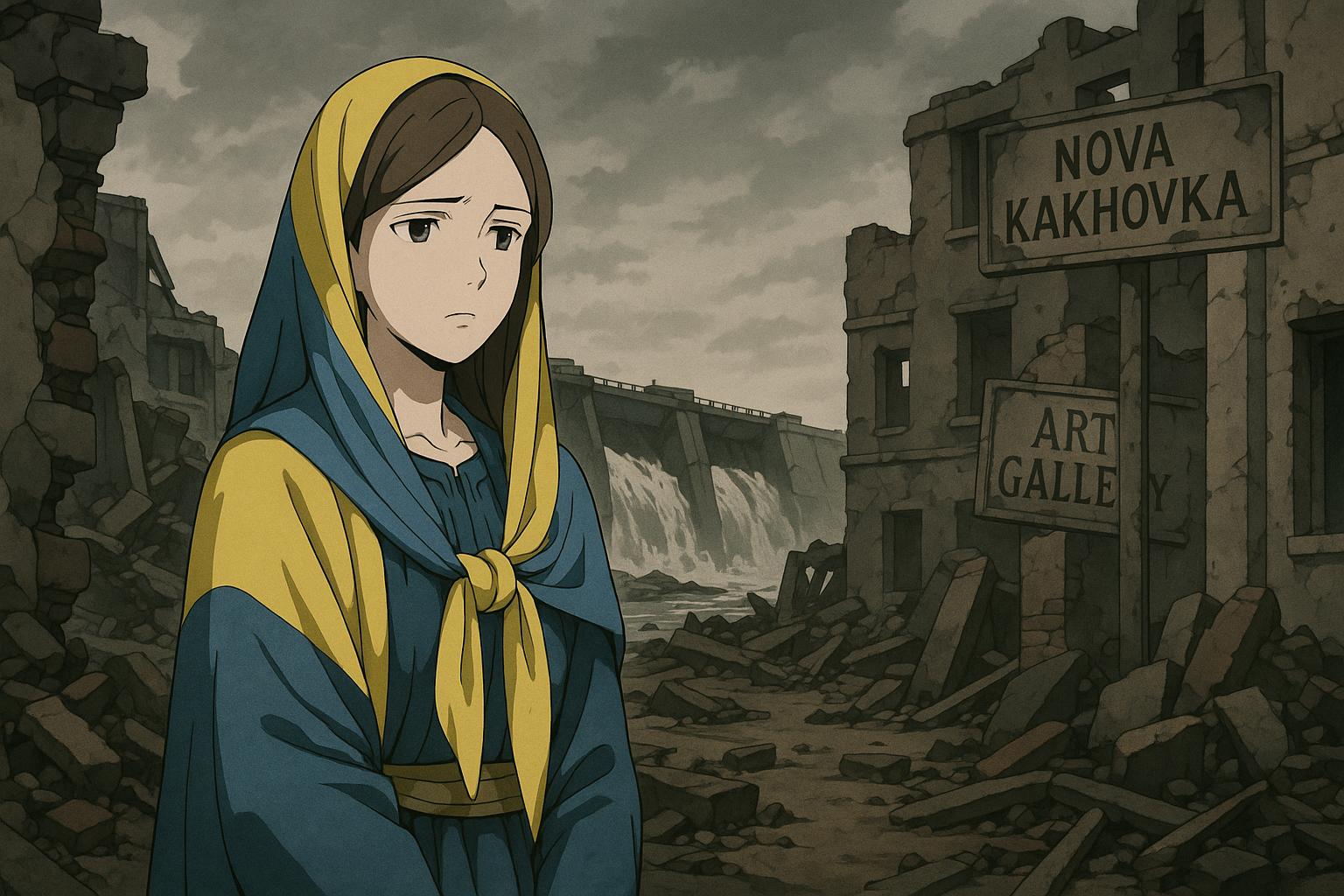The prospect of a peace deal in Ukraine, one that might involve “ceding land for peace,” demands a deeper understanding that transcends the simplistic narratives often propagated by media outlets. Conversations surrounding such potential agreements must acknowledge the stark realities faced by individuals like Adeline, a Ukrainian woman whose life was irrevocably altered by the conflict. Recently, she revealed to a visitor from Lviv the haunting absence of her home in Nova Kakhovka, a place now mired in Russian occupation. The ecological devastation following the destruction of the Kakhovka dam in 2023 only compounds the tragedy, as Adeline mourns potential dreams—like opening an art gallery—that have been lost in the fallout of war.
The land currently controlled by Russia spans an area comparable to that of both Portugal and Slovenia, housing about 5 million people while also displacing 2 million refugees who now roam the globe. The conditions for those trapped in the occupied territories are dire, underscored by severe repression and a systematic push for Russification. Refugees such as Adeline live with memories and remnants of their homes, facing an emotional landscape that defies any attempt to “whitewash” the situation with euphemistic phrases like “land for peace.” This notion trivialises the harsh realities of occupation, as countless families have not merely lost property, but their very livelihoods and family histories.
Currently, there exists a profound scepticism among Ukrainians regarding any peace proposals that arise, especially when it comes to those involving territorial concessions. Surveys indicate that a mere 29% of Ukrainians might consider a plan put forth by Donald Trump, whereas 51% express support for options proposed by European leaders. The disparity of opinions underscores a vital truth: peace is not merely about the cessation of hostilities, but about genuine security, recovery, and stability. The notion of “ceding” land is equated with offering up something valuable that has been wrongfully taken—akin to a car stolen by a thief.
Moreover, the conflict shows no signs of abating; Russia continues to launch drone and missile attacks, undermining any semblance of negotiations. Noteworthy is the statement made recently by Vladimir Medinsky, Russia’s envoy, who harboured dismal references to historical conflicts, reminding Ukrainians of the Swedish wars that spanned over two decades. His comments evoke a grim reality: the desire for peace faces formidable challenges, requiring resilience and sustained support as Ukraine braces for what lies ahead.
While military analysts suggest that Ukraine may manage to preserve its current holdings, the nation faces ongoing pressures that speak to the urgency for both strategic defence and technological advancements. Ukraine is emerging as a leader in drone manufacturing, producing over 2 million last year as it seeks to bolster its defence capabilities. However, a pressing issue looms: recruitment. One frontline commander lamented a manpower reduction, as his battalion operates at only 30% capacity, exemplifying the human cost of prolonged conflict.
With Russia supposedly gearing up for new ground offensives, the international community's support remains essential. Recent changes in leadership in Europe, particularly with the advent of Germany's Chancellor Friedrich Merz and the assertive stance of UK Prime Minister Keir Starmer, offer a glimmer of hope for a robust coalition willing to support Ukraine. While Ukraine seeks US military aid, including standardised Patriot air-defense systems, it also hopes Europe will escalate economic sanctions against Russia. The winding path to a ceasefire may hinge on adapting to shifting geopolitical priorities and securing sustained international support.
Beyond military strategies, Ukraine will confront a new set of challenges once the conflict draws to a close. Vital questions will arise regarding national unity in the wake of war, the reintegration of over 3 million veterans, and the logistics of free and fair elections amidst an already tumultuous political landscape. The shadow of Putin's regime, which thrives on discord, could cast a long pall over Ukraine's efforts to heal.
The risk remains that Europe’s attention may wane, reminiscent of its disengagement from the tragedy in Bosnia after the 1995 Dayton agreements. Current international aid underpins Ukraine’s non-military budgets, and long-term financial commitments will be necessary to restore a shaken economy. Critics in Europe, from Portugal to Poland, may resist footing the bill, making it essential for leaders like Merz to advocate for the confiscation of Russia’s frozen assets to fund reconstruction.
As the conflict continues, the notion of a definitive peace—much like a so-called “Victory in Ukraine” day—remains elusive. The idea that a hasty, unbalanced deal could somehow close this tragic chapter is a dangerous misconception. Without the determination for a sustained struggle, alongside a unified front from both Ukraine and Europe, a meaningful and just peace may remain the stuff of hope for a future beyond the decade.
Reference Map:
- Paragraph 1 – [1], [4]
- Paragraph 2 – [1], [5]
- Paragraph 3 – [2], [6]
- Paragraph 4 – [3], [7]
- Paragraph 5 – [1], [2]
- Paragraph 6 – [1], [3]
- Paragraph 7 – [1], [3]
Source: Noah Wire Services
